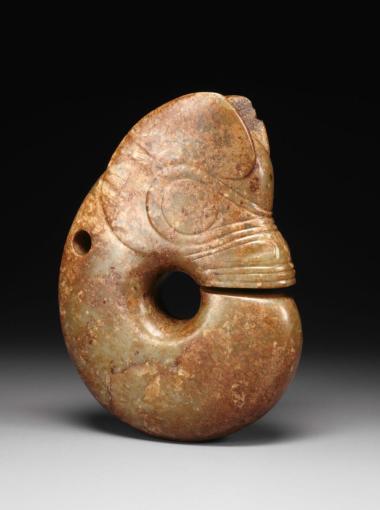The Buddha is represented in a straight position with relaxed arms, hands looking almost limp joined on his lap. This artwork perfectly illustrates the state of relaxation of the body that comes with meditative and introspective exercises recommended by Shakyamuni, (the "Sage of the Shakyas") as Buddha is sometimes named as a reference to the princely family he was born in at the turn of the 6th and 5th century BC.
Such an iconography also refers to a famous episode of the life of Buddha, in which a polycephalic snake named Mucilinda saved him from drowning as he was meditating by a flooded lake. During the reign of Jayavarman VII (1182 / 83 – circa1220), characterised by a more humane sense of aesthetic representation, Buddha was almost always represented sitting in a meditative state, wrapped by Mucilinda’s body, whose seven heads seem to form a protective hood around his head. His smiling face is illuminated by a peaceful and serene expression, a remarkable illustration of absolute detachment, total introspection and perfect calm attached to the symbolic meaning of this type of iconography.
Discovered by Louis Delaporte in 1873 in the ruins of the Bakan complex (formerly known as Preah Khan Kampong Svay) this sensitively sculpted, almost realistic work, is characteristic of the Bayon style, with its typical hairstyle showing large, lightly carved curls, the lotus petal-shaped headdress masking the skull, and the jewelled belt chiselled with blossoming flowers, a detail only noticeable on the back of the statue. Unexpectedly, the Buddha is not represented with his eyes closed, as would be usual in the Bayon style. Without being able to tell why, the roughly carved almond-shaped eyes and iris seem to be a later addition. This is an example of the modifications Khmer artworks were subjected to after their creation. Nevertheless, the sobriety and elegance of this sculpture is perfectly aligned with the religious ethos of the Jayavarman VII, all about spirituality and radiant inner peace.

